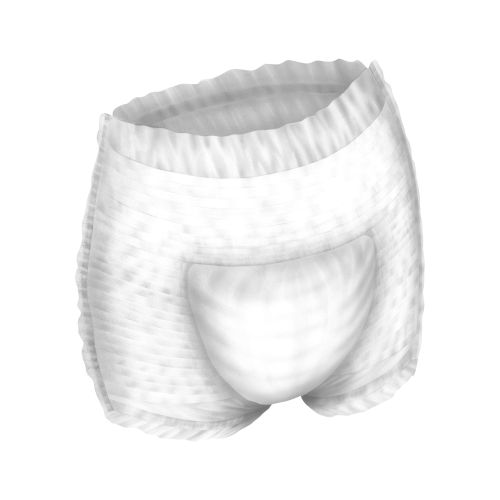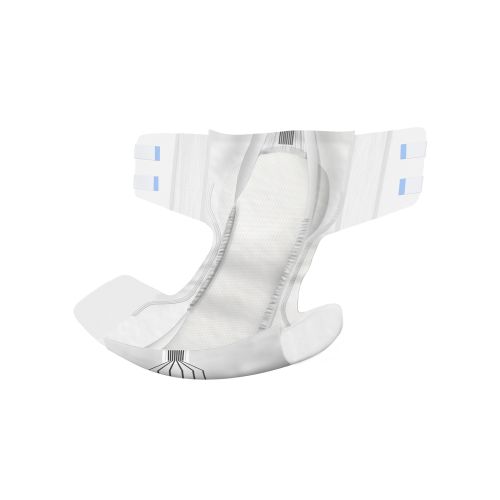
Functional incontinence is a form of involuntary urine loss in which the bladder works normally, but physical, psychological or environmental limitations means a person is unable to reach the toilet in time. Contrary to other types of incontinence, such as stress incontinence (weakened pelvic floor muscles) and urge incontinence (often caused by a nerve disorder) functional incontinence is not caused by problems in the bladder function. Especially elderly people and people with physical disabilities suffer from functional incontinence, which is usually the result of underlying disorders or environmental factors, such as accessibility of the toilet.
Causes of Functional incontinence
The term functional incontinence refers to the fact that physical, environmental or mental factors normal toilet visits difficult. This may because that the toilet is difficult to reach, the person does not know where the toilet is, or that side effects of medication cause an unnatural urination pattern.
People with an increased risk of functional incontinence include those with neurological diseases such as dementia, and those with eye problems or general blindness. Functional incontinence also includes those people who are bedridden or wheelchair-bound who cannot reach the toilet in time, or people who are otherwise impaired by walking problems or problems with their hands or arms.
Functional incontinence is seen more often in people who have Osteoarthritis (cartilage problems), and chronic and physical disabilities. This group of people often suffer from functional incontinence in new or strange environments because they lack the right tools to reach the toilet in time. This is also the case for blind or partially blind people.
Medicine use and functional incontinence
Functional incontinence is sometimes known as drug-induced incontinence because the use of certain medications may cause functional incontinence. This includes certain types of diuretics can, which are sometimes prescribed for cardiac failure, edema or high blood pressure. Other medications may increase the risk of functional incontinence if they have a sedating effect on the bladder muscles, just as certain medications can disturb the nerve signals that are sent to the brain when the bladder is full.
Symptoms of functional incontinence
It can be difficult to distinguish between functional incontinence and other kinds of incontinence. Functional incontinence often occurs in people with dementia and other cognitive or neurological disorders. Many of these patients are not fully aware of their problems or are not able to explain them. Neurological diseases such Parkinson’s and Alzheimer’s can also cause urge incontinence. As a result, functional incontinence can be difficult to treat and is often misdiagnosed. A thorough physical examination and medical history by a health care professional is very important.
Treatments for functional incontinence
Functional incontinence can often be prevented or solved. Since functional incontinence is generally a practical problem rather than a disease, the treatment generally requires a practical solution.
First and foremost, the people or patients with functional incontinence should be offered regular toilet visits and offered help with the clothing if needed. Easy access and knowledge of the location of the toilet can also be a good solution for functional incontinence. Application of other aids, such as toilet bars and handles, are also part of the solution.
Tips and solutions for functional incontinence
Tip 1: For blind or partially blind people it is that the toilet is easily accessible (keep the light on at night, leave the toilet door open, keep a short distance to the toilet, and remove possible obstacles).
Tip 2: Provide clothing that can be easily removed (buttons, zips and belts can be difficult).
Tip 3: Be prepared when leaving the house or going outside by finding out in advance where there are public toilets.
Tip 4: It is recommended that disabled or wheelchair-bound people are always assisted when using the toilet- the support of care staff should not be underestimated.
Tip 5: Discuss the medical side effects of medication with a health care practitioner. If possible, switch to a different medication or adjust the dosage.
Tip 6: Bladder training and pelvic floor exercises can help maintain or regain control of the bladder so that accidents can be prevented.
Functional incontinence and incontinence products
Incontinence products are a good temporary solution and aid for functional incontinence, but should never replace a toilet visit. Often incontinence products are given preventively without trying to find a solution for the underlying problem. But functional incontinence can often be managed successfully by supporting the patients during their toilet visits and by improving their general mobility. To make a toilet visit as easy as possible, a pant or pad is recommended.











